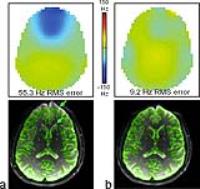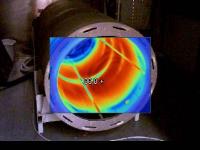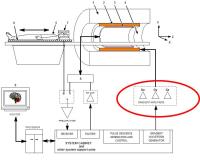ISMRM 24th Annual Meeting & Exhibition • 07-13 May 2016 • Singapore |
|
Weekend Educational Course: MR Systems Engineering
Skill Level: Intermediate
Organizers: Thomas Foo, Ph.D. & Simone Winkler, Ph.D.
Saturday 07 May 2016 |
Overview
This one-day Educational Course is targeted at scientists and clinicians interested in understanding the engineering of magnetic resonance systems on a subsystems level. In a series of lectures from experts in MR Systems Engineering, attendees will first be provided with an overview of an MR system, and then learn about the design of magnet, gradients and shim systems, as well as the operation of the radiofrequency (RF) electronic subsystems that interface with RF coils. Issues relating to the site preparation and installation of new MR systems will also be discussed. In addition attendees will be taught about the key elements of MR safety as it relates to peripheral nerve stimulation (low frequency electromagnetic field interactions with the body) as well as energy deposition in the body from high frequency electromagnetic field interactions. The compatibility of medical devices and implants with an MRI scanner will be discussed. This course is aimed at scientists and clinicians with a technical background and interest in MR systems hardware. It is expected to provide attendees with an understanding of fundamental aspects of MR system operation.
Target Audience
Scientists and clinicians who are starting to work in the field of MRI and would like to have an overview of the engineering of an MR system. More experienced researchers in particular areas of MR Engineering will also benefit from hearing about recent advances in the engineering of MR systems.
Educational Objectives
Upon completion of this course, participants should be able to:
- Assess the basic subsystems hardware components of an MRI scanner, including how they interact and function;
- Evaluate issues related to installing a new MR scanner, including space, venting, power and cooling considerations;
- Recognize practical limitations in the design and construction of magnets, gradients and shim systems;
- Identify the basic mechanisms by which medical devices interact with the magnet and gradients within an MRI scanner;
- Describe the interactions of electromagnetic fields (both low frequency gradient switching and high frequency RF) with the human body; and
- Explain the RF electronic subsystems that interface with RF coils, including interactions between separate transmit and receive coils.
|
|
PROGRAM |
| Moderator:
Ergin Atalar, Simone Winkler |
08:30
|
|
MR Systems Overview - Permission Withheld
Saban Kurucay
A general overview of the Magnetic Resonance Imaging
(MRI) system design is presented with focus on main
subsystems, their desired properties and impacts on
imaging system performance.
|
|
| |
|
|
|
|
| |
|
|
Magnets & Shims |
|
09:00
|
|
Magnet Design,
Manufacturing & Installation
Johannes Van Oort1
1Alltech Medical Systems America
A brief introduction will be given to the various
magnet types and geometries for MR Imaging. Design of
superconducting magnets will be treated in more detail,
including a short introduction to the phenomenon of
superconductivity in NbTi wires, magnet design
considerations, magnet ramp, stability and quench
protection. Manufacturing of superconducting magnets
will be discussed, followed by common installation
guidelines and industry practices.
|
09:30
|
 |
Shimming: Superconducting & Passive Shims; Higher Order
Shims & Application to Imaging 
Trong-Kha Truong1 and
Allen W Song1
1Brain Imaging and Analysis Center, Duke
University, Durham, NC, United States
Having a homogeneous magnetic field is an essential
requirement to ensure high image quality in MRI.
Significant field inhomogeneity can result in severe
signal losses or geometric distortions. To achieve the
desired uniformity, effective and efficient shimming
strategies are needed. Specifically, passive and active
shimming strategies have been developed to correct for
both the intrinsic and extrinsic magnetic field
inhomogeneities. Advantages and disadvantages of these
various solutions are reviewed. In addition, specific
applications in imaging experiments for some advanced
shimming strategies are discussed, when the conventional
shimming solutions are inadequate.
|
10:00
|
|
Break & Meet the Teachers |
|
| |
|
|
|
|
| |
|
|
Gradients |
|
10:30
|
 |
Coil Design Considerations, Manufacturing & Limitations - Permission Withheld
Eva Eberlein
Improvements in resolution and speed in recent MRI
scanner generations were only possible with the
development of high-performant gradient systems. Present
gradient technology allows gradient amplitudes of up to
80mT/m and slew rates of up to 200T/m/s simultaneously
for conventional whole-body systems. Even higher
amplitudes and slew rates are possible using dedicated
coils and special gradient systems. In this talk we will
describe gradient coil design methods including boundary
conditions like available space, stray field, forces and
vibration. We show limitations to the usage of the
possible technical performance due to physiological
conditions and other constraints. Several approaches are
discussed how to overcome the different limitations.
|
11:00
|
 |
Gradient Drivers: Amplifier Considerations, Power, Tuning &
Cooling 
Juan A Sabate1
1GE Global Research, Niskayuna, NY, United
States
Gradient driver high capability is needed in the
magnetic resonance imaging (MRI) for better image
quality, better resolution and faster imaging. Imaging
speed and SNR require increased PSD reproduction
fidelity and higher power capability. Higher power has
been possible with the change of implementation from
linear amplifiers to much lower internal losses switched
amplifiers. Switched amplifiers consist on a power stage
combining multiple switching semiconductors, commanded
with high performance digital control. The digital
controller requires precise feedback control, gradient
coil model and compensation of nonlinearities. The
design has to consider efficiency for operation cost and
practical thermal management.
|
11:30
|
|
Eddy current calibration, compensation and pre-emphasis; and
gradient non linearity: Impact on application 
Thomas L. Chenevert1
1Radiology - MRI, University of Michigan, Ann
Arbor, MI, United States
Imperfections in applied gradient fields are manifest as
deviation from ideal temporal waveforms and spatial
nonlinearity. Eddy currents induced in conductive
surfaces are mitigated to a great extent by pre-emphasis
of gradient demand to compensate for known inductive
loss thereby yielding near-ideal temporal waveforms.
However, residual eddy currents do impact demanding
applications and may still require post-acquisition
software correction. Spatial non uniformity of applied
gradient fields induce geometric distortions which are
effectively removed via automatic 2D or 3D (un)warping,
although there is residual bias in diffusion weighting.
This lecture will focus on practical impact of these
effects.
|
12:00
|
|
Lunch & Meet the Teachers |
|
| |
|
|
|
|
| |
|
|
RF Transmit & Receive Chain |
|
13:30
|
|
RF Transmit: Power
Delivery, Decoupling, & Duty Cycle
J. Vaughan
|
14:00
|
|
RF Receivers: Signal Detection Chain, Digitization, System
Noise Figures - from MRI Signal to Bits 
Greig Scott
This presentation provides an overview of the receive
chain in an MRI scanner. Topics to be discussed are
preamplifiers, device protection, analog to digital
conversion, and high speed data links. Effort will in
particular be placed on looking under the hood of basic
ADCs to better understand how their performance limits
MRI dynamic range. Finally we will look at the
technology future of wireless MRI and local digital MRI
receivers.
|
|
| |
|
|
|
|
| |
|
|
Controlling the MR Scanner |
|
14:30
|
|
Controlling the MR
Subsystems: Pulse Sequence Control, Waveform Generation &
Real-Time Control
J. Andrew Derbyshire1
1FMRIF, NIMH / National Institutes of Health,
Bethesda, MD, United States
|
15:00
|
|
Multi-Modality Imaging in an MRI Scanner: Simultaneous
Imaging & Therapy - Making the Systems Compatible 
Jan Lagendijk
The use of MRI for treatment guidance is growing. The
MRI linac is being developed for guidance of external
beam radiotherapy. Linacs and MRI are not easily
compatible, solutions will be described. The
requirements and challenges of robotics for MRI guided
brachytherapy will also be described.
|
15:30
|
|
Break & Meet the Teachers |
|
| |
|
|
|
|
| |
|
|
Systems Safety |
|
16:00
|
|
Basic MR Safety, SAR & Power Deposition/Monitoring (Includes
Effect of RF Coils & Ultra High Fields) 
Roger Luechinger1
1Institute for Biomedical Engineering,
University and ETH Zurich
MR safety is an important topic for all users performing
MR procedures on humans. In this presentation we want to
limit us on the MR system safety without implants. The
potential risk of MRI and the international standard
which taking them into account will be presented.
Further the topic of testing own RF coils will be
discussed. In a last part the additional problems from
multi transmit RF coils and their monitoring will be
covered.
|
16:30
|
|
Peripheral Nerve Stimulation, Implants & Devices: Safe Use &
Considerations for MRI 
Ergin Atalar1
1UMRAM and Dept. of Electrical and
Electronics Engineering, Bilkent University, Ankara,
Turkey
Two of the main safety problems of MRI is discussed.
First one is the safety concerns due to the gradient
induced peripheral nerve stimulation. Current commercial
MRI scanners have gradients which are capable of
inducing electric field in the body in a level that may
cause sensation but fortunately this level is far from
the possibility of causing harm. The second one is
related to the safety of the patients who wear
implantable medical devices. The radiofrequency pulses
of MRI may induce currents on its leads. It is feared
that this current may reach to a level that it can cause
burns.
|
17:00
|
|
Adjournment & Meet the
Teachers |
|
| |
|
|
|
|
| |
The International
Society for Magnetic Resonance in Medicine is accredited by the
Accreditation Council for
Continuing Medical Education to provide continuing medical education
for physicians. |



